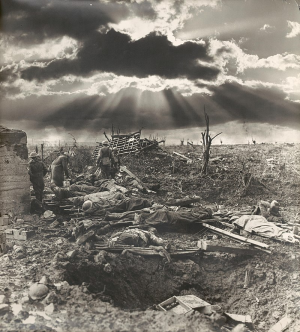July 31, 1917
The Battle of Passchendaele, also known as the Third Battle of Ypres, began on this day in 1917. It would last until November The battle took place on the Western Front in Belgium, in the Ypres salient, where the two armies had been at a stalemate for three years. The Allies' objectives were to capture the high ground around Ypres, a key rail junction, and advance on the German-occupied Belgian coast. The battle was known for its mud, blood, and futility, and resulted in heavy casualties for both sides.
The battle's conditions were horrifying for the soldiers. They huddled in waterlogged shell holes or became lost in the mudscape, unable to find the front line. The mud gummed up rifle barrels, making them difficult to fire, and swallowed up soldiers as they slept. However, the mud also saved lives, cushioning many shells that landed and preventing them from exploding.
Despite pushing back the defenders, the Allies failed to achieve their objectives, and the new British positions were precarious and had to be abandoned in spring 1918.
The battle resulted in an estimated 310,000 Allied casualties and 270,000 German casualties. The Allied casualties included: 275,000 total, 38,000 Australians, 5,300 New Zealanders, and More than 15,600 Canadians.



